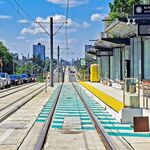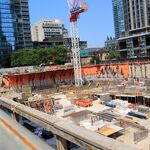I don't support a Big Dig project like Boston's. The big difference is that in Boston removing the expressway was not an option because it was used very heavily for through traffic. The Gardiner is basically a means of getting people to the centre of the city, we have at least two other "just passing through routes". For this reason, the expense of the Big Dig is not feasible here.
Although I haven't been to Boston post-big-dig, I've seen Montreal's Ville Marie and it seems to me that people forget the on and offramps on a buried expressway. They are big, concrete, noisy portals to hell that take up a lot of space and block expected means of getting around the city.
I'm sympathetic to people for whom transit is not an option, but I don't think removing the Gardiner will change what they do. If they come from the north-east, instead of taking the DVP to the Gardiner and scooting along the Gardiner to downtown, they'll take the DVP to Richmond where it will end and scoot across downtown on surface streets. The difference in my mind is minimal, their commute will be 35 minutes instead of 30 if they live near Lawrence, or 1:35 instead of 1:30 if they live in Whitby.
The Gardiner represents a huge continued investment in bringing these people close to their doors via an expressway, paid for by all of us in terms of maintenance, lost tax revenue, and a noisome environment.





